DOE-Funded Research Projects Win 35 R&D 100 Awards for 2003
Thirty-five research projects funded by the U.S. Department of Energy have been honored for their technological significance with R&D 100 Awards for 2003.

The technologies and products were selected by the editors of R&D Magazine and a panel of 60 outside experts to receive the prestigious R&D 100 Awards. Widely recognized in industry, government, and academia as a mark of excellence for the most innovative ideas of the year, the R&D 100 Awards are the only industry-wide competition rewarding the practical applications of science.
The R&D 100 Awards recognize the most promising new products, processes, materials, or software developed throughout the world and introduced to the market the previous year. Awards are based on each achievement's technical significance, uniqueness, and usefulness compared to competing projects and technologies.
The complete list of 2003 R&D 100 Awards appears in the September 2003 issue of R&D Magazine. The winners will be recognized at R&D Magazine's 41st annual awards banquet to be held on October 16, 2003, in Chicago, where the magazine is based.
The following is a list of the 35 DOE 2003 R&D 100 Award winners, from 11 national laboratories and two companies whose research is supported by DOE. Joint awards appear at the end of this list.
National Laboratories
Argonne National Laboratory
Argonne researchers won three of the coveted R&D 100 Awards this year, bringing that lab's total to 82 since the inception of the award.
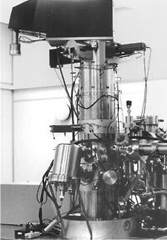
Argonne's Nestor Zaluzec led development of the award-winning Scanning Confocal Electron Microscope, which permits the observation and characterization of sub-surface structures of thick, optically opaque materials at both nanometer-level resolutions and large fields of view. The instrument merges the capabilities of the scanning, transmission, and x-ray microscopes and achieves unprecedented resolutions in optically dense materials by incorporating the technology of confocal imaging into an electron microscope. The microscope will benefit studies of nanomaterials, particularly the next generation of electronic, magnetic, and photonic devices ranging from high-tech consumer electronics to the latest in multi-layered high-density research and development integrated circuits.
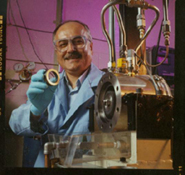
Argonne researchers Ali Erdimir and George Fenske won an R&D 100 award several years ago for developing a process to make carbon-based coating that was harder and slicker than Telfon. Now, they have developed the new Nanostructured Carbide Derived Carbon technology that makes coatings harder still, and more cost-efficient to manufacture. The coating can be grown at rates up to 100 micrometers per hour and is composed of graphite, diamond, amorphous carbon, and carbon "nano-onions" (small carbon structures with concentric rings, resembling an onion). These components vary between 2 to 10 nanometers in thickness. Industry has expressed interest in the coating to seal water pumps in automotive engines to prevent dry-run failure and extend the engine's lifetime. The development of this coating could save billions of dollars and reduce energy consumption.
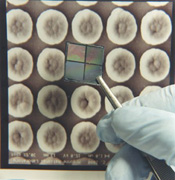
Argonne researchers Dieter Gruen, Orlando Auciello, and John Carlisle teamed with researchers from Innovation Plasma Systems to develop the Large-Area Ultrananocrystalline Diamond Films and Deposition System. This diamond film technology and desposition system uses diamond grains only five nanometers in size to provide the first-ever affordable large-area diamond film coating, suitable for producing large area coatings for macro-devices, microelectromechanical systems and nanoelectromechanical system devices, biodevices, and biosensors. Nanocrystalline diamond films offer a particularly clear example of the startling changes in properties that can occur when materials approach single-digit nanometer dimensions where more than 10 percent of the atoms are at surfaces or grain boundaries. These films are grown using novel argon-rich microwave plasmas developed at Argonne, and exhibit a number of unique properties.
More information is available about Argonne's technologies.Idaho National Engineering and Environmental Laboratory
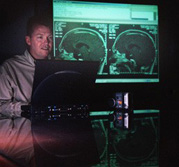
Since 1986, the Idaho National Engineering and Environmental Laboratory has received 28 R&D 100 Awards. The newest technology to win&the Change Detection System&is a new imaging system developed by INEEL researchers Greg Lancaster, James Jones, and Gordon Lassahn (retired) that has achieved unparallel ability to bypass hurdles that can complicate comparison of similar images. While computers can scrutinize every pixel of an image, they are often bogged down by trivial differences in camera angles or lighting. Whether they are photos of forged documents or surveillance images of container locks and seals, CDS can spot subtle discrepancies that are often impossible to spot by comparing side-by-side pictures.
More information is available about INEEL's technology.Lawrence Berkeley National Laboratory
With two of its technologies selected as winners for 2003, Berkeley Lab now has received a total of 32 R&D 100 Awards.
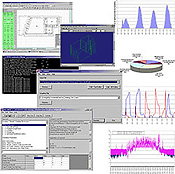
Berkeley Lab researchers Fred Buhl, Joe Huang, and Frederick Winkelmann led development of the EnergyPlus Building Simulation Program, a new computer program that models expected energy use in commercial and residential buildings and leads to greater efficiency. Architects, engineers, and researchers are using EnergyPlus to model complex heating, cooling, and lighting systems for innovative buildings that are more energy-efficient, more comfortable, and have lower energy costs. The software also calculates indirect environmental effects, like atmospheric pollutants, associated with a building's energy use. More than 12,000 users have downloaded the free software since it was released. In addition, over 50 licenses to collaborative developers and eight commercial licenses have been issued.
A number of research partners helped develop EnergyPlus, including Curtis Pedersen, Richard Liesen, and Richard Strand of the University of Illinois at Urbana-Champaign; Linda Lawrie of the U.S. Army's Construction Engineering Research Laboratory; Drury Crawley of the Department of Energy's Office of Energy Efficiency and Renewable Energy; Donald Shirey of the Florida Solar Energy Center; Daniel Fisher of Oklahoma State University; William Bahnfleth of Pennsylvania State University; William Beckman of the University of Wisconsin; and Michael Witte and Jason Glazer of GARD Analytics, Inc.
Extreme Ultraviolet Lithography: See Joint Awards, below.
More information is available about Berkeley's technologies.Lawrence Livermore National Laboratory
Technologies developed by researchers at Lawrence Livermore National Laboratory brought the lab another six R&D 100 Awards for 2003&bringing the lab's total to 97.

The Lasershot Precision Metal Forming System is a revolutionary approach to shaping large-panel structural components, such as in the aviation industry. The ability to precisely form large, thick-section, single-panel structural components is not achievable by any other process. This award is shared with Metal Improvement Company Inc.
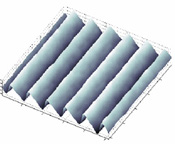
The Ion Beam Thin-Film Planarization Process has helped solve one of the greatest technical challenges for producing faster computer chips with more memory using extreme ultraviolet lithography.
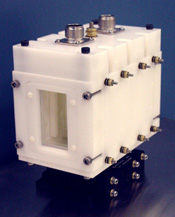
The High-Average-Power Electro-Optic Q Switch will allow fast optical switching of high-average power lasers for machining, energy research, and national defense applications. The Q switch offers a 10-fold increase in the average power handling capability for lasers to 300 watts instead of only 30 watts.
Biological Aerosol Sentry and Information System: See Joint Awards, below.
Extreme Ultraviolet Lithography Full-Field Step-Scan System: See Joint Awards, below.
MEMS-based Adaptive Optics Phoropter: See Joint Awards, below.
More information is available about Livermore's technologies.This year, Los Alamos National Laboratory received eight R&D 100 Awards, bringing the lab's total to 89 since it first entered the competition in 1978.
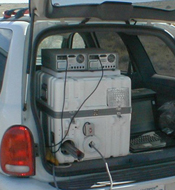
The Compositional Analysis by Raman-Integrated Spark Spectroscopy (CARISS) is the only field-deployable, portable tool for chemical (elemental and compositional) analysis that can identify the composition of a material at close, stand-off and remote distances and in less than two minutes. Designed for analysis in the field, CARISS can be used for such applications as carbon detection in soil, monitoring of soil for the presence of toxic metals and harmful organic compounds, industrial process control and mining operations, detection of chemical agents related to homeland security, and identification of materials used in weapons of mass destruction.

FIRETEC, the first physics-based three-dimensional computer code, is designed to simulate the constantly changing, interactive relationship between wildfire and the environment. It simulates the dynamic processes that occur within a fire and the way those processes feed off and alter each other, and has significant potential to help prevent loss of life, property, and natural resources. FIRETEC combines physics models that represent combustion, heat transfer, aerodynamic drag, and turbulence with a computational fluid-dynamics model that represents airflow and its adjustments to terrain, different types of fuel (vegetation), and the fire itself. It may be used for such applications as predicting wildlife behavior in rugged terrain under various atmospheric conditions, optimizing fuel-management strategies, investigating how fire interacts with various fuels, and providing realistic simulations for training inexperienced firefighters.
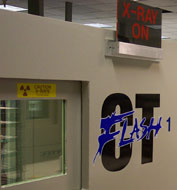
FlashCT, a high-speed, industrial computed tomography scanning system, produces high-resolution, three-dimensional images of the external and internal geometries of objects. Its unique imaging capabilities make it applicable for high-throughput, inline manufacturing applications, including uses such as the mass production of customized parts. FlashCT applies to any process that requires the non-destructive scanning of an object. Itsuse in prototyping mass-produced custom devices streamlines the manufacturing process, increases throughput, reduces overall manufacturing costs, eliminates environmentally harmful by-products used in other processes.
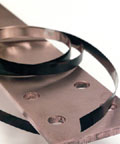
Flexible Superconducting Tape carries high electrical currents-200 times the electrical current of copper wire-in high magnetic fields at liquid-nitrogen temperatures with no resistance. Flexible enough to be wrapped into a tight coil with no loss of superconductivity, the widespread use of the tape could decrease costs associated with electrical power transmission and generation, and reduce the current electrical requirements of the planet, thus conserving resources and reducing pollution.

Green Destiny is the world's most efficient supercomputers. For nearly a year, Green Destiny ran without any downtime in a dusty 85oF warehouse with no facilities for cooling, humidification control or air filtration while occupying less than six square feet and drawing, at most, 5.2 kilowatts of power for the 240-processor system. The supercomputing capacity and efficiency provided by Green Destiny is an affordable and environmentally sustainable alternative to the conventional supercomputer, which requires significant, costly infrastructure to operate. Its applications include traditional Web hosting and Web-server farms, E-commerce, financial services, space and satellite communications, scientific applications, desktop supercomputing and smart houses.
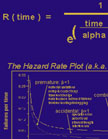
PowerFactoRE is a comprehensive methodology and an integrated suite of reliability engineering tools designed to optimize manufacturing processes. The result of a collaboration between the Laboratory and Procter & Gamble, it comprises a unique set of proven methods, statistical and analytical tools, simulation software, procedures, and training that enable line managers to understand reliability losses and to correct seemingly isolated defects in the manufacturing process. PowerFactoRE gathers and analyzes production data; fits the data with accurate statistical distributions to build a simulation of the system; and validates the system model. Used currently in more than 200 plants worldwide, PowerFactoRE can be applied across a wide range of businesses to increase productivity, guide capital investments, and increase production.

Super-Thermite Electric Matches are designed to replace the conventional electric matches used in pyrotechnics applications. Unlike conventional electric matches, Super-Thermite matches produce no toxic lead smoke and are safer to use because they resist friction, impact, heat, and static discharge, thereby minimizing accidental ignition. The principal application is in the entertainment industry, which uses fireworks displays for a variety of venues such as sporting events, holiday celebrations and musical and theatrical gatherings. Secondary applications include uses for triggering explosives for the mining, demolition, and defense industries; setting off vehicle air bags; and igniting rocket motors.
Biological Aerosol Security and Information System: See Joint Awards, below.
More information is available on Los Alamo's technologies.
National Energy Technology Laboratory
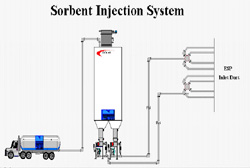
Researchers at the National Energy Technology Laboratory have teamed with ADA Environmental Solutions to develop the Sorbent-Based Mercury Control technology, which removes mercury from the flue gas of coal-fired power plants. This technology directly supports the mercury reduction goals of the President's Clear Skies Initiative. Laboratory studies have shown that powdered activated carbon (PAC) injection into flue gas could be an effective technology for the control of mercury emissions. ADA Environmental Solutions conducted full-scale testing at four power plants to demonstrate the cost and performance of PAC injection. The tests showed that the PAC removed mercury in amounts ranging from the low 60s to the low 90s percent. PAC was effective on both bituminous and subbituminous coals, capturing all species of mercury, even elemental mercury, which is more difficult to remove.
National Renewable Energy Laboratory
The National Renewable Energy Laboratory received one R&D 100 Award this year, which gives it a total of 35 awards since the laboratory began operating as the Solar Energy Research Institute in 1977.
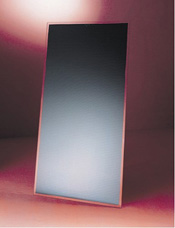
The sophisticated High-Rate Vapor Transport Deposition System quickly and uniformly deposits semiconductor layers for photovoltaics (PV) module manufacturing. Besides being mechanically simple (and, hence, reliable and inexpensive to maintain), its great innovation is that it can deposit thin semiconductor films 2,000 to 20,000 times faster than rival technologies. In fact, this deposition technology can be used to make an entire 60-cm x 120-cm PV module in as little as 40 seconds&more than two orders of magnitude faster than its nearest rival. Because of this and its resultant economies of scale, and because this technology wastes very little material, high-rate vapor transport deposition has already dropped the cost of PV modules by more than 20 percent, and could soon drop the cost another 30 percent. The award for this innovation was shared by First Solar and NREL. Dr. Rick Powell of First Solar was the inventor and lead designer of the deposition system.
Oak Ridge National Laboratory
Oak Ridge National Laboratory won four R&D 100 Awards for 2003, bringing the lab's total to 116&second only to General Electric in the history of the awards.
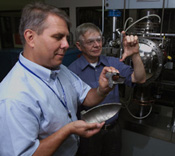
New Cast Stainless Steel for High-Temperature Performance&or CF8C-Plus&is designed to drastically improve high-temperature durability, performance, and reliability based on ORNL's unique engineered microstructure alloy development methodology. The engineered microstructure method dramatically changes CF8C-Plus from steel that cannot be used above 600-650oC to steel that can be used up to 850oC and resists failure during creep, mechanical fatigue, and thermal fatigue. End users such as Caterpillar (who is the joint recipient of the award) or commercial foundries like MetalTek will benefit from CF8C-Plus because it is a cost-effective product with higher performance and immense reliability. CF8C-Plus was supported by DOE's Freedom Car Vehicles Technologies and DEER of DOE's Office of Energy Efficiency and Renewable Energy.
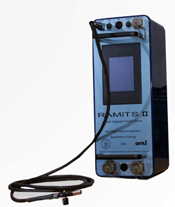
Developed by ORNL researchers Tuan Vo-Dinh, Joel Mobley, Brian Cullum, David Stokes, Alan Wintenberg, and Steven Frank, along with Robert Maples of RIS, the Raman Integrated Tunable Sensor (RAMiTS) is a compact, "point-and-shoot," fully integrated, battery-operated Raman monitor. Outside the laboratory, this device can perform qualitative analysis of chemical and biological samples in seconds. RAMiTS can identify hundreds of substances, including toxic chemicals, by-products from explosives, biomedical markers, pharmaceuticals, and illicit drugs. RAMiTS could also help revolutionize sensing applications such as environmental monitoring, medical diagnostics, and homeland security.

Developed by ORNL researchers Michael Ramsey, William Whitten, and Peter Reilly, along with ORNL postdoctoral ORNL fellow Oleg Kornienko and researchers from Protasis Corp, MicroTrapMS is a highly miniaturized ion trap mass spectrometer that is based on ORNL patented technology. The product can be used for applications from online screening for toxins in municipal watersheds to detecting hazardous substances at airport checkpoints. MicroTrapMS will enhance real-time capabilities of field engineers to sweep many local areas for pesticides, drugs, explosives, and more. MicroTrapMS has the power of a conventional mass spectrometer at a lower cost.
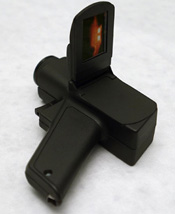
Uncooled Micromechanical Infrared Camera (UMIR-Cam) is a sensitive, miniature imaging and infrared photo-detection device developed ORNL researchers Panos Datskos, Slobodan Rajic, Lawrence Senesac, and Nickolay Lavrik and ORNL research associate James Corbeil. UMIR-Cam operates at room temperature and can be used in a number of endeavors, including night vision, industrial process monitoring, and medical imaging. It also can help firefighters see through smoke and has particularly important uses in the commercial and military sectors, because infrared radiation is the second-most intense source of radiation in our environment.
Compositional Analysis by Raman-Integrated Spark Spectroscopy: See Joint Awards, below.
More information is available on ORNL's technologies.
Pacific Northwest National Laboratory
With the three R&D 100 Awards the Pacific Northwest National Laboratory earned for 2003, the laboratory now has won 62 since the award's beginning in 1969.
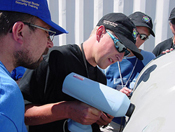
Aaron Diaz, PNNL senior research scientist, led development of the Product Acoustic Signature System&or PASS. This handheld tool enlists ultrasound pulses to assay the contents of sealed containers. The technology works by bouncing sound off a container's contents, then collecting a telltale echo from what's inside. An official can run PASS, which looks like a power drill crossed with a blow-dryer, over a tanker truck or barrel to distinguish crude oil from vegetable oil or chemical-weapons agents. The device can also unmask hidden packages, reveal secret compartments, and determine a container's fill level. PASS can save time and protect law enforcement and border inspectors from potentially hazardous materials.
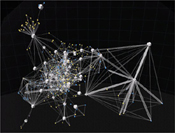
PNNL senior research scientist John Risch led in the development of the Starlight visualization system-software that graphically depicts connections among disparate pieces of information from large, complex, and dynamic collections. Though initially designed for the U.S. intelligence community to identify terrorist threats, this technology is applicable in diverse arenas, from competitive intelligence and fraud detection to epidemiology and bioinformatics.
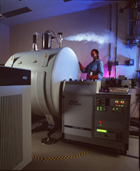
PNNL researcher and Battelle Fellow Richard D. Smith&a seven-time winner of R&D 100 Awards&was the principal investigator in the development of FT-MS Proteome Express, an automated, ultra-high resolution combined separation and mass spectrometer-based system that measures the large and complex proteins in any organism at any time. Measuring proteins and their abundances at different times, and especially the proteins present in only tiny amounts, is the key to understanding molecular-level cell function and disease progression, treatment, and prevention. This instrument may trim years off the time required to analyze a proteome, or the entire protein set of an organism. In experiments at PNNL, the FT-MS Proteome Express has demonstrated more than 100-fold improvements in speed and sensitivity over previous methods and demonstrated its applicability in projects that range from how microorganisms absorb atmospheric carbon to how certain viral proteins cause blindness.
More information is available on PNNL's technologies.
Sandia National Laboratories
Researchers from Sandia National Laboratories won seven R&D 100 awards this year&bringing their total to 34.
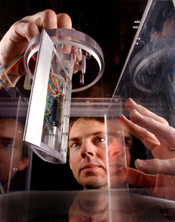
A technology helping U.S. forces of the future may consist of an extremely lightweight mobile chemical sensor&SnifferStarTM&created by Sandia researchers Doug Adkins, George Dulleck, Greg Frye-Mason, Pat Lewis, Richard Kottenstette, Edwin Heller, and Ronald Manginell, along with former Lockheed Martin researcher Clifford Megerle. SnifferStarTM mounts on a drone aircraft for remote surveillance of battlefield situations where suspect plumes or clouds are present. The detector's primary purpose is to save lives by warning soldiers that chemical weapons are present on a battlefield. Developed under a Shared Vision program with Lockheed Martin, the entire module weighs less than a golf ball, operates on less than 0.5 watts, and uses the wind generated by the motion of the craft to collect samples for analysis. SnifferStarTM is sensitive to both blister and nerve agents. It ignores common interferents and analyzes chemical warfare agents in 20 seconds. The device also has potential utility in or near the ventilation systems of buildings, or, with addition of small pumps to force air into the device, on posts surrounding military bases.
The Low Emissions Atmospheric Metering Separator (LEAMS) is a family of atmospheric geothermal separators used in the development of geothermal power. The primary function of LEAMS is to safely contain and clean the atmospheric-vented steam of polluting solids, liquids, and noxious gasses. This system is designed to be environmentally friendly, intrinsically safe, and relatively easy to transport and assemble. LEAMS has a wide operating range and can be used in drilling, well testing, and geothermal power plant start-up. The LEAMS technology was supported by work done by Sandia researcher Allan Sattler and was developed by Two-Phase Engineering and Research, Inc. Most fabrication was accomplished by Drill Cool Systems, Inc.
The Emitter Turn-Off Thyristor (ETO)&a fast-response semiconductor device developed under the direction of Sandia's Stan Atcitty&allows a power utility to rapidly convert energy stored in a DC device into AC power and minimize the negative effects of such interruptions as lightening strikes, equipment failures, and other anomalies in powered transmission systems. Developed with funding from the DOE Energy Storage Program, ETO is the product of a joint effort by Sandia, Solitronics, Virginia Tech, and the American Competitiveness Institute in Philadelphia.
Sandia's Brian Kirby, Tim Shepodd, and David Reichmuth were honored for creating Isolated Cast-in-Place Microvalves, which enable micro-scale systems to combine high-voltage and high-pressure analytical or synthetic techniques. Previous micro-scale systems could not effectively control both electrokinetic and high-pressure hydraulic flow. These new valves are commercially applicable to miniaturization techniques (which include greater process speeds and minimal impact to the environment) and are crucial to drug discovery and evaluation in the pharmaceutical industry.
Sandia researcher Doug Drumheller, in cooperation with Extreme Engineering Ltd. of Calgary, Alberta, lead the development of the Acoustic Telemetry Technology, which represents the fulfillment of an oil industry quest to enhance communication between the driller and the drill bit. Existing measurement-while-drilling communication methods, based on mud-pulse techniques, were revolutionary when introduced in the early 1980s and remain a bottleneck to the precision drilling needs of the 21st century. Acoustic telemetry technology uses the well-drilling tubing as the data transmission medium and sound waves as the data carrier. Among the advantages compared to existing techniques: a 10-fold improvement in data rates and no blocking of the fluid flow path.
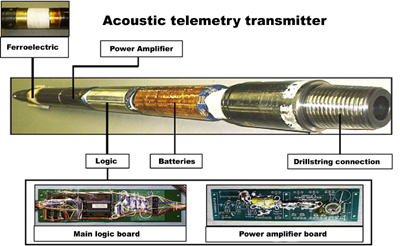
Extreme Ultraviolet Lithography Full-field Step-Scan System: See Joint Awards, below.
MEMS-Based Adaptive Optics Phoropter: See Joint Awards, below.
More information is available on Sandia's technologies.
Savannah River Technology Center
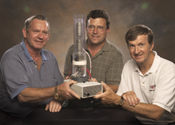
The Savannah River Technology Center received its fourth R&D 100 Award in 2003, this time for the Aerosol-to-Liquid Particle Extraction System (ALPES). Savannah River's Cliff Carlson along with Dr. Justin Halverson and Jeff DeGange designed this highly efficient, portable device that collects airborne particles, including chemical agents and microorganisms, and concentrates them into a liquid for scientific analysis. ALPES is able to collect any aerosol, including chemical agents; radioactive particles; microorganisms (such as spores, bacteria, and fungi); residual substances from explosives; and byproducts of manufacturing processes (such as lead in a battery factory). An array of units, deployed throughout a public or private facility, could be a vital part of an anti-terrorism alert system. This system could quickly notify authorities of the existence of harmful biological, chemical, or explosive materials in the area.
More information is available about SRTC's technology.
Company Research and Development Supported by DOE
Airak
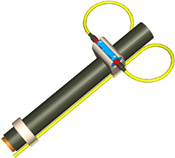
Airak's Fiber Optic Current Sensor measures magnetic field phase and amplitude, current phase and amplitude, and/or temperature on conductors using light and a property of certain crystals known as the Faraday effect. Due to the fiber optic construction of the sensor, it is safe for use by personnel and interconnected equipment. Additionally, as system voltage levels increase, the voltage isolation requirements increase also increase, which cause conventional sensors to become larger and heavier. However, Airak's sensor weighs only 28 grams independent of system voltages or currents, at least to 12KV or currents to 30KA. The device was developed with funding from the DOE Energy Storage Program.
3M

An advanced power-line cable from 3M, designed to reduce transmission bottlenecks by increasing overhead electrical power-line capacity, is one of the most technologically significant products introduced into the marketplace this year, according to R&D Magazine. The product, known as the 3M Composite Conductor, is capable of transmitting two to three times more electricity than conventional power-line cables of the same diameter without increasing structural loads. The new heat-resistant conductor is aimed at reducing transmission bottlenecks by enabling utilities to increase power-line capacity on existing structures. The product was developed with funding from the DOE Office of Electric Transmission and Distribution and is the subject of a pilot program underway at the National Transmission Technology Research Center at Oak Ridge National Laboratories.
Joint Awards
Lawrence Berkeley National Laboratory, Lawrence Livermore National Laboratory, and Sandia National Laboratories
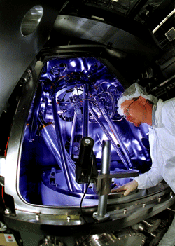
More than 100 researchers from the three national laboratories were honored for the Extreme Ultraviolet Lithography Full-field Step-Scan System, a technological advance that will lead to dramatic improvements in the speed and memory of computer systems. This system is the only one in its field that can pattern full chip-size areas on silicon wafers with features as small as 50 nm. It is the embodiment of a set of groundbreaking technologies that were considered by many to be impossible as recently as a few years ago. Commercialization of this breakthrough will allow advances in microelectronics to continue into the next decade.
Lawrence Livermore National Laboratory and Los Alamos National Laboratory
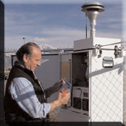
The Biological Aerosol Sentry and Information System (BASIS) is a biothreat detection and characterization technology for protecting civilian populations against terrorist aerosol releases of microorganisms capable of inducing lethal infection. BASIS allows the detailed identification, localization, and time-of-release pinpointing of select aerosol-released organisms. This precise detection makes possible the rapid treatment of exposed individuals, often even before symptoms appear. By reducing the rate of false positives to nearly zero, BASIS prevents the potential disruption of civilian life that false alarms would likely provoke. BASIS can be deployed in a broad spectrum of locations where population clusters could be targeted by terrorists. Applications include population centers (e.g., transportation terminals/portals), border checkpoints, seats of government, critical infrastructure nodes such as power plants, tunnels and bridges, and sports and entertainment venues. The system was deployed at the Salt Lake City Winter Olympics as part of the event's security preparations.
Lawrence Livermore National Laboratory and Sandia National Laboratories
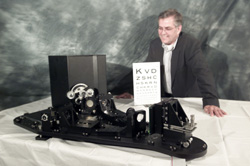
The MEMS-Based Adaptive Optics Phoropter expands upon traditional devices currently used in optometrists' offices. The technology uses MEMS-based deformable mirror technology to correct wave-front aberrations in the eye. It combines technologies from astronomy and micromachining to advance the study and treatment of retinal diseases. Applications for the tool include generation of improved prescriptions for custom contact lenses or laser eye surgery, as well as high-resolution retinal imaging. In addition to the two national laboratories, the award is shared with the University of Rochester; Wavefront Sciences; Boston Micromachines Corp.; and Bausch & Lomb.

